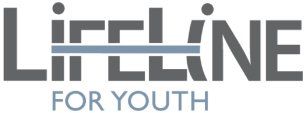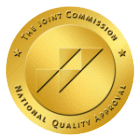Research Based
- Family
The LifeLine model is based on the premise that teens recover within the context of their families. One of the strongest predictors of positive outcomes for youth after discharging from an intensive treatment program, like LifeLine, is the on-going involvement of the family in treatment. Parent-focused interventions are the most extensively tested and supported form of treatment for youth conduct problems (Sunseri, 2004; Weisz et al., 2004) and have proven promising for substance abuse, ADHD, anxiety, depression, and grief (Hoagwood, Burns, Kiser, Ringeinsen, & Schoenwald, 2001). LifeLine offers family therapy, provided by a licensed therapist who works individually with each family. In addition, LifeLine has weekly “open meetings”, at which parents, teens, and siblings participate in therapeutic, multifamily groups to unite the community of families for support and treatment. LifeLine also provides parent weekends to create opportunities for parents to discover their own core treatment issues, their family-of-origin issues, and to establish a united supportive network during the treatment process. LifeLine uses a family focus with all students because the staff are committed to the premise that recovery for the youth will occur in the context of their family.
- Aftercare
LifeLine’s long-term commitment to aftercare is empirically-based. Reviews of the research in adolescent residential care demonstrate that aftercare is essential to maintaining the progress made during treatment (Curry, 1991 & 2004, Whittaker, 2004). Curry, a noted researcher in adolescent residential care wrote, “Residential treatment must be conceptualized as one step in a longer intervention, one that must be followed by supportive mechanisms after discharge” (2004, p. 433).
- Continuum-Of-Care
The evidence pertaining to adolescent treatment suggests that outcomes are maximized when there is a seamless continuum of care (Lieberman, 2004). In other words, youth tend to do poorly if they only receive one level of care (i.e., residential treatment), and are subsequently discharged to home. Outcomes are maximized in residential treatment when 1) youth progress from more to less restrictive levels of care that match their level of readiness and 2) when the levels of care are part of a larger treatment program that operates in a seamless or integrated manner (Drake et al., 2005). When a youth can progress thru levels-of-care within one program their records, staff, therapists, peer groups, and treatment plan remain continuous. The need to navigate different systems disappears and the focus remains on treatment (Drake et al., 2005). At LifeLine, three levels of care are offered to meet the youths’ needs: residential treatment, day treatment, and intensive out-patient. Transitions among the levels of care are “seamless” and based on individual assesments. Relationships with staff and peers are preserved when students move to a different level of care, and the program philosophy, values, and goals remain consistent. Care at LifeLine is designed to be both integrated and coordinated.
- Outcome Research
Evidence-based mental health treatment programs must commit to ongoing outcome research in order to evaluate effectiveness and inform therapeutic practice. (e.g., Curry, 2004; National Advisory Mental Health Council, 2001). LifeLine has demonstrated a consistent commitment to evaluating program outcomes. Each year, outcome data has yielded favorable results. For example, in 2004 data obtained from parents and students surveyed with a “gold standard” outcome measure indicate that 91% of students significantly improved. The average change in scores for students at LifeLine students during this time period was five times the value considered “significant” for this particular outcome measure.
- Community
Empirical research indicates that permeability between adolescent treatment programs and community resources is one of the most potent predictors of positive outcomes after discharge from treatment. The more community contact and support available to the youth during treatment, the more likely the youth will have a positive adjustment after discharge from treatment (Curry, 2004, Hoagwood et al., 2001, Lieberman, 2004, Whittaker, 2004). LifeLine’s model is community focused. During the course of treatment, each family is encouraged to involve key community resources, such as a school counselor, a spiritual leader, prior therapists, and probation officers. During the extensive outpatient programs, the youth returns to public school, part-time jobs, and after-school groups. Community-treatment center partnerships are vital especially when put in the context of a body of research that suggests that students do not necessarily generalize learning from residential/intensive settings to more normalized settings, such as their homes (confer Drake et al., 2005; Fonagy et al., 2002). Such research shows that youth need ample opportunity to practice new skills in their day-to-day contexts (i.e., school, work, activities, peer groups), with therapeutic support and supervision, in order to transport gains made from one treatment setting to another setting.
- Individual Care
Evidence-based practice is based on a key concept: individualizing care to match the psychological needs and the values of the client (Institute of Medicine, 2001). The President’s New Freedom Commission on Mental Health 2 recommended that each treatment provider develop an individualized treatment plan for every client through identifying the unique needs, risks, values, and expectations of each youth and family. LifeLine is committed to individualizing care and devotes considerable resources to providing specialty groups to meet the individual needs of the youth (e.g., grief/loss, adoption, anger management, abuse survivor, spirituality and AA). Treatment plans are individualized and fine tuned on a weekly basis to ensure a continual focused effort.
- Spirituality
The beneficial role that faith and spirituality play in the prevention and treatment of substance abuse and psychological problems has long been acknowledged 3. Recent evidence demonstrates that there is a positive association between positive spirituality and mental health and well being (Larimore, Parker, & Crowther, 2002). Researchers recommend that therapists learn to assess their clients’ spiritual health and to provide desired spiritual intervention (Richards & Bergin, 2000). LifeLine is committed to supporting spirituality and to providing opportunities for their youth to experience spiritual enrichment.
- Recovery
The President’s New Freedom Commission on Mental Health released their final report entitled: Achieving the Promise: Transforming Mental Health Care in America (2003). The report documents the primary and revolutionary goal of the commission: recovery. Recovery— from psychological distress, mental illness, substance abuse— is the primary goal of “evidence-based” practice (Drake et al., 2005). This new goal stands in contrast to our culture’s long history of low expectations for those who suffer emotional problems, and the “revolving door” system in mental health. For LifeLine, recovery is a philosophy and value that permeates all aspects of its program. Each of the aforementioned elements of the LifeLine model (i.e., family, community, after-care, service continuum, individualized care, spirituality, and outcome research) is designed to promote recovery — enduring well-being and rich, rewarding lives — for youth and their families.


